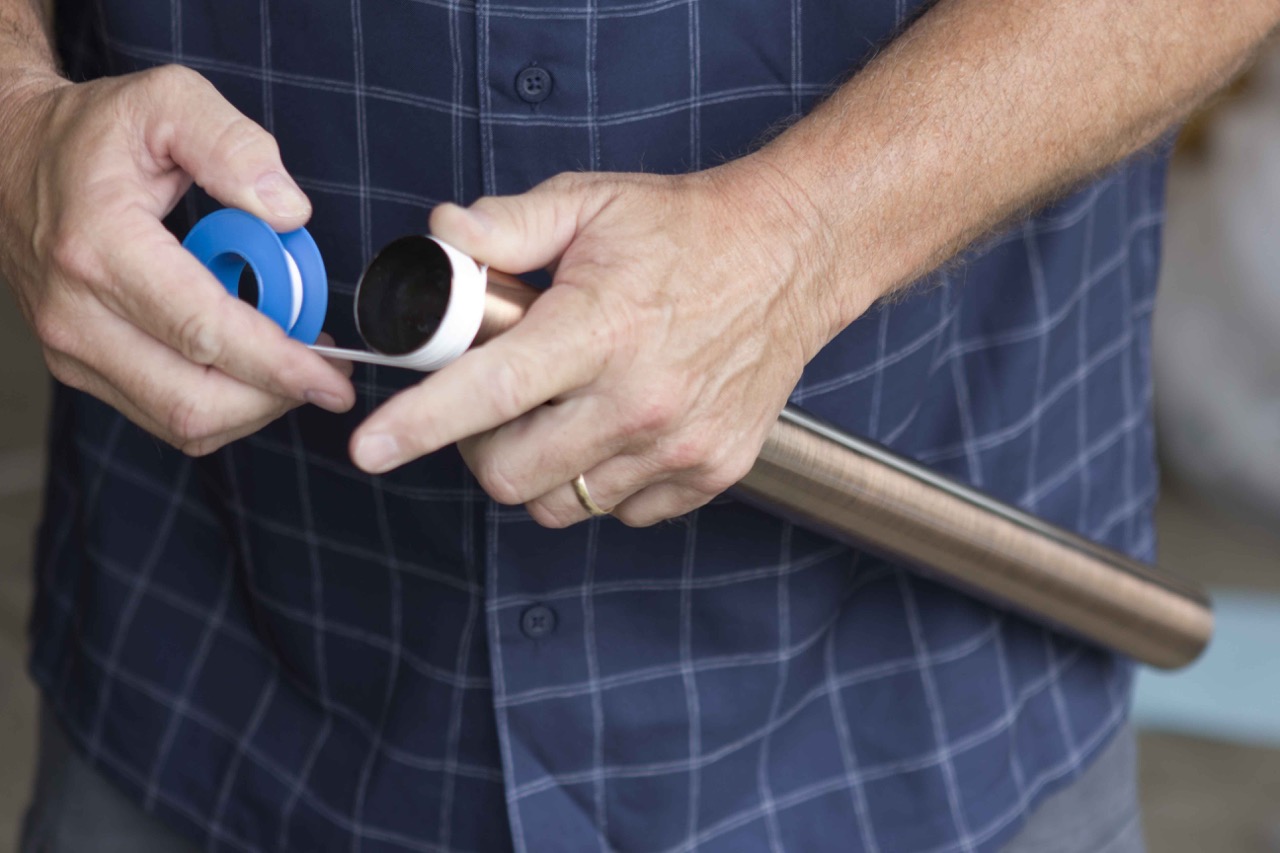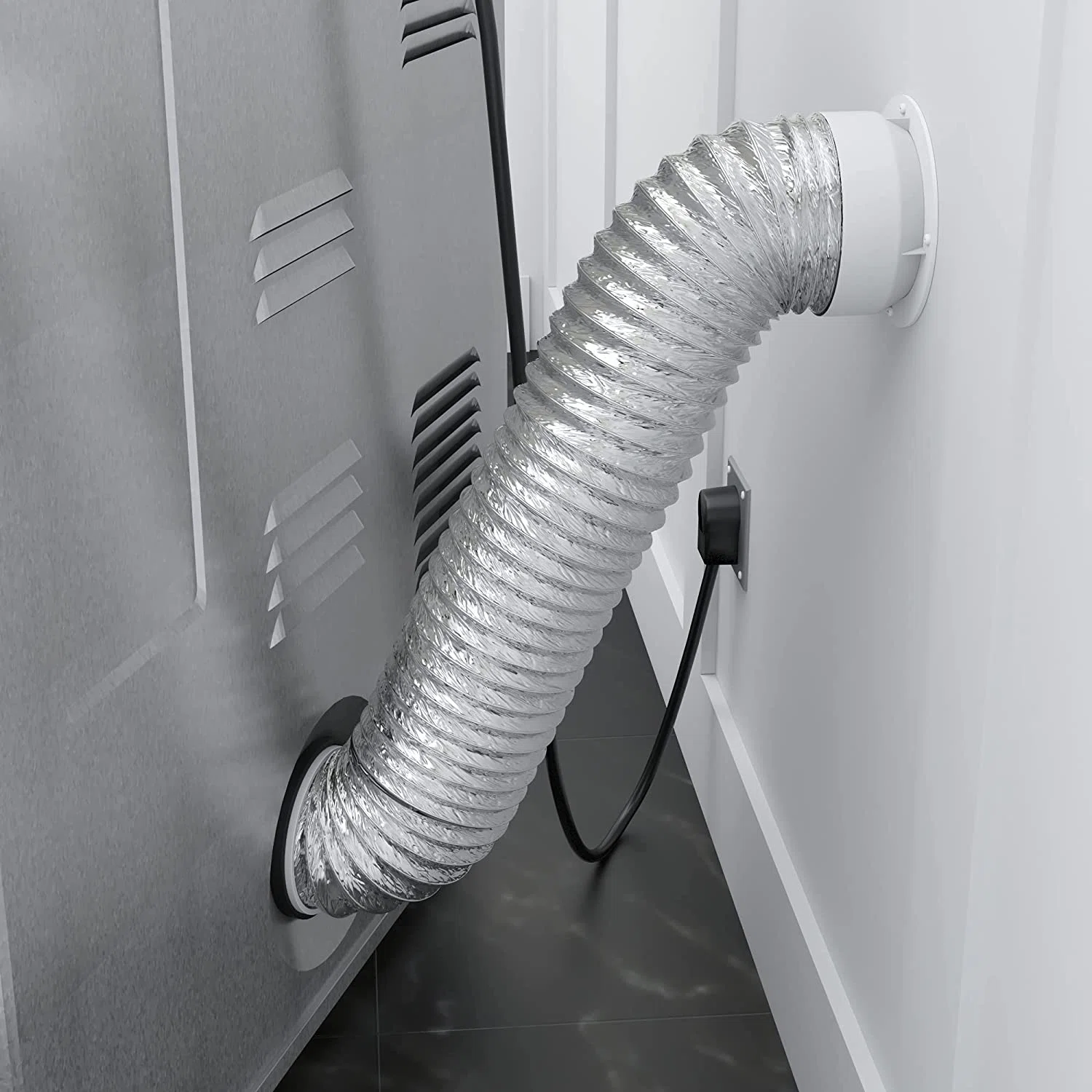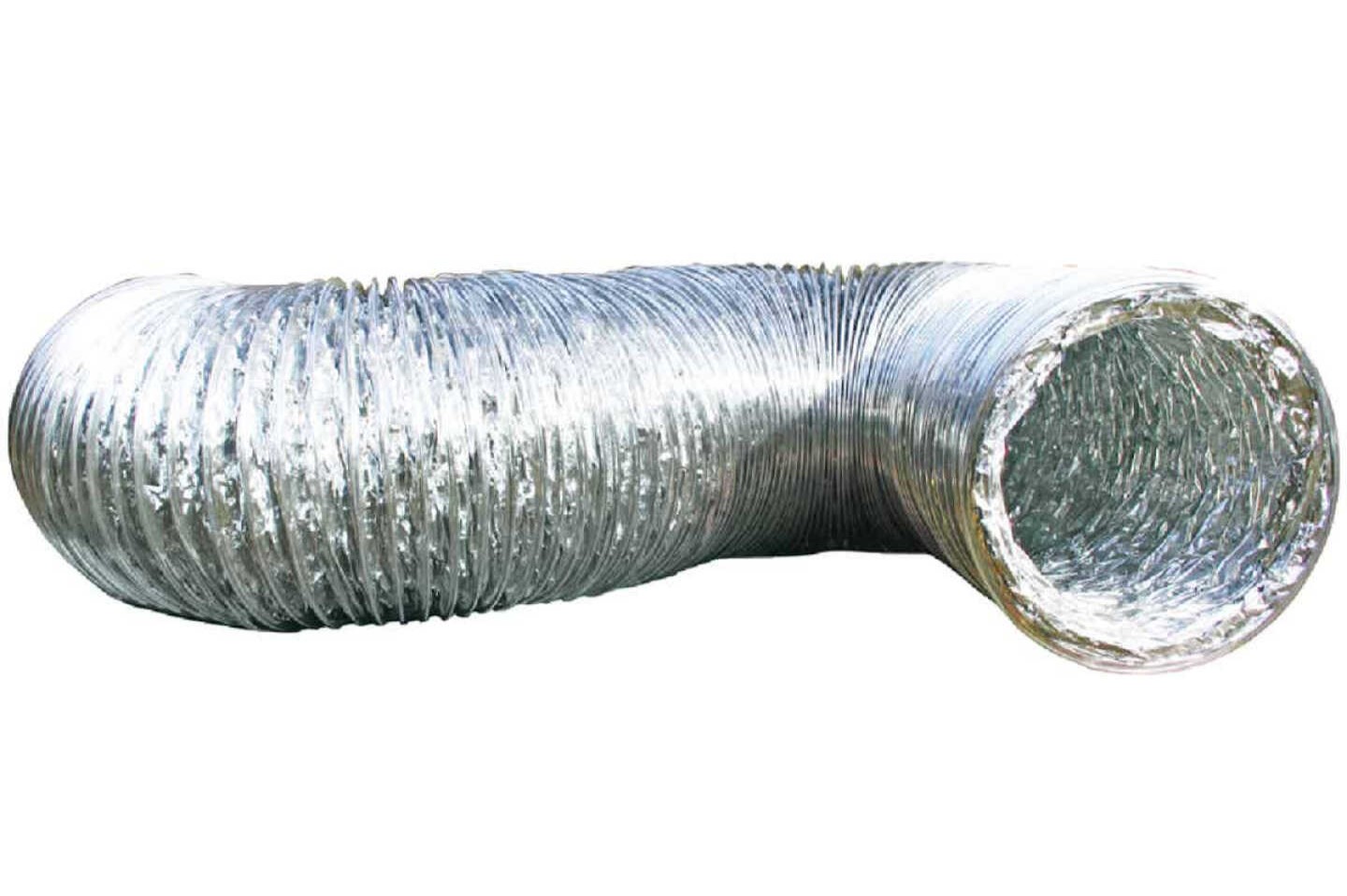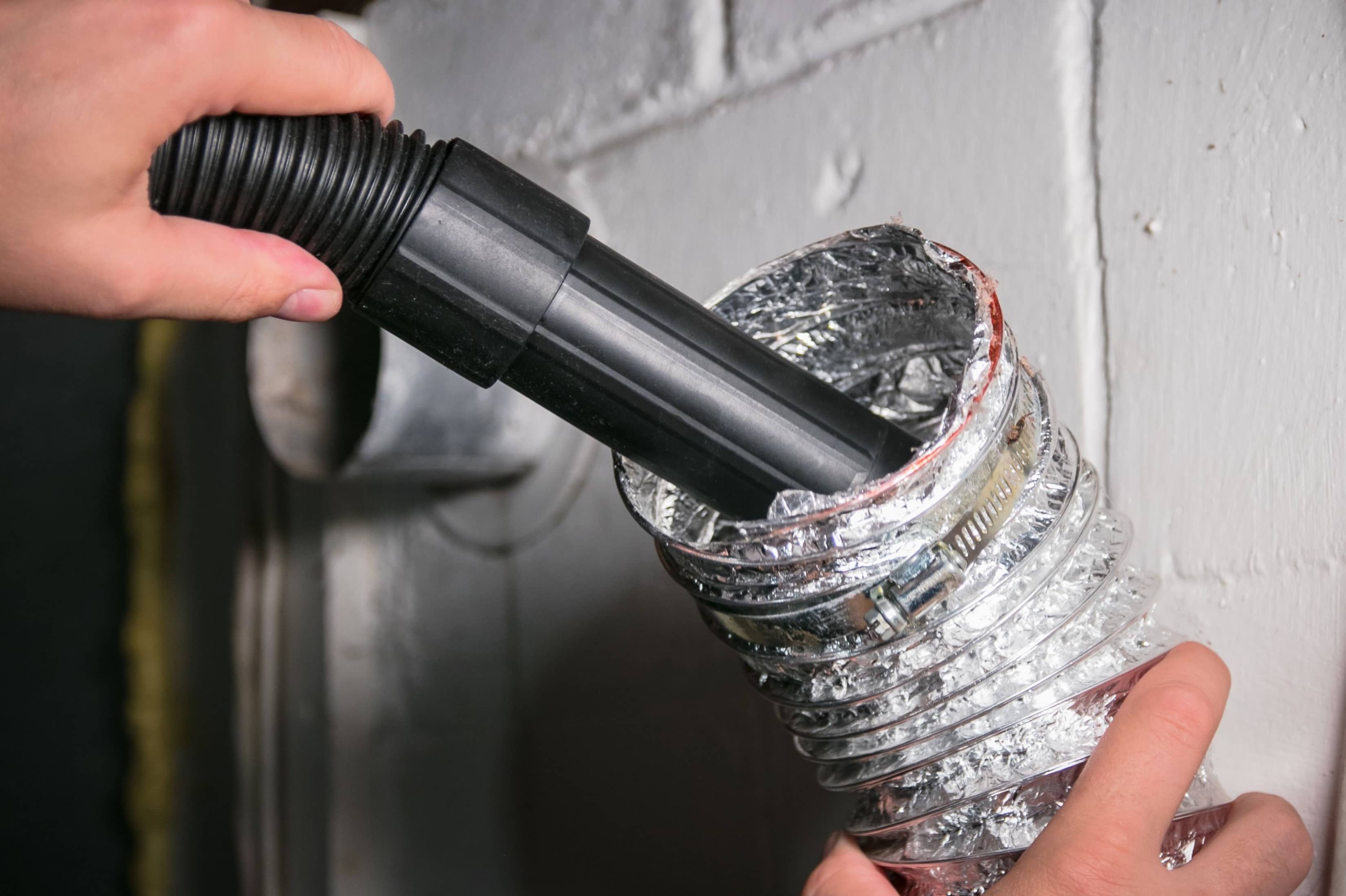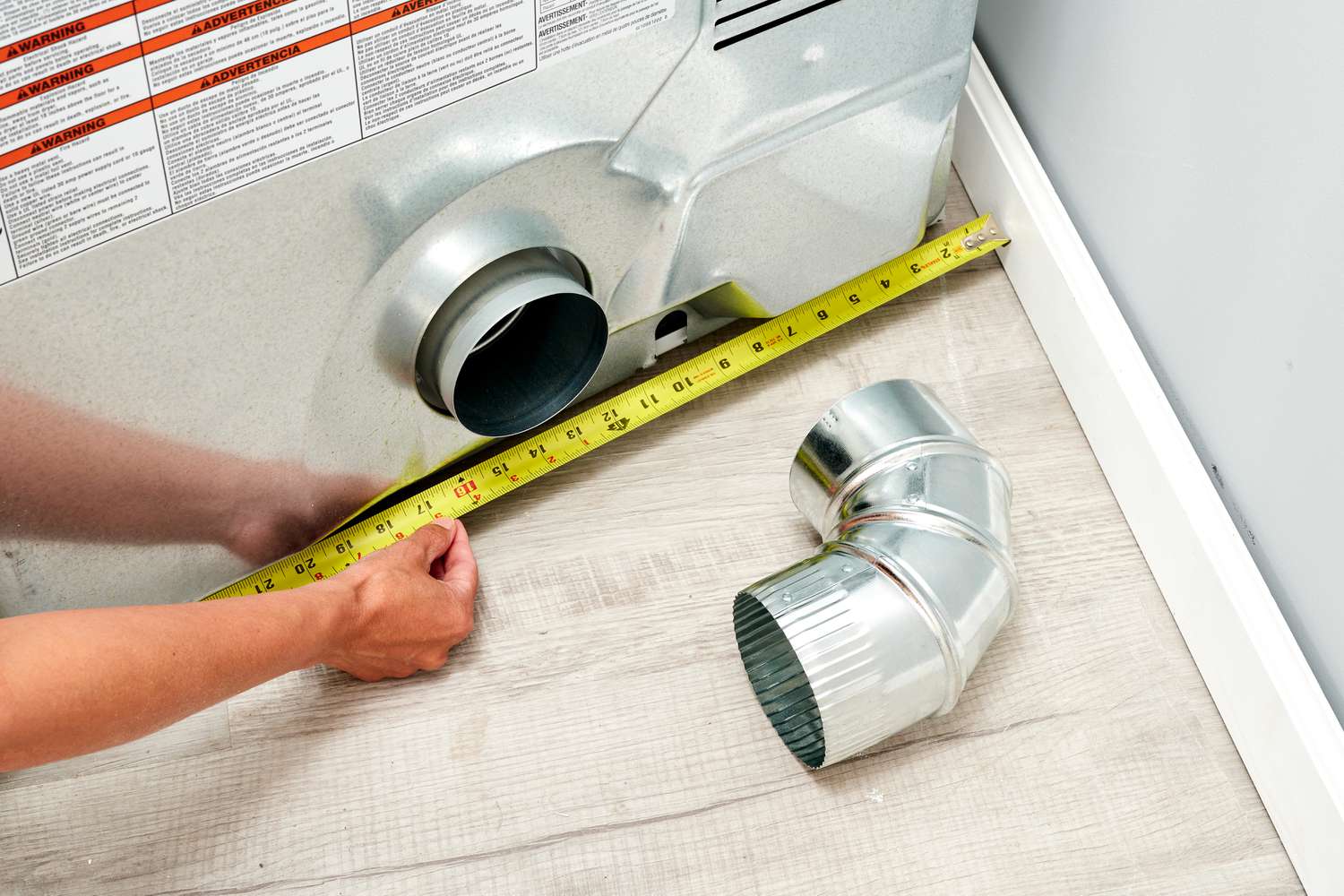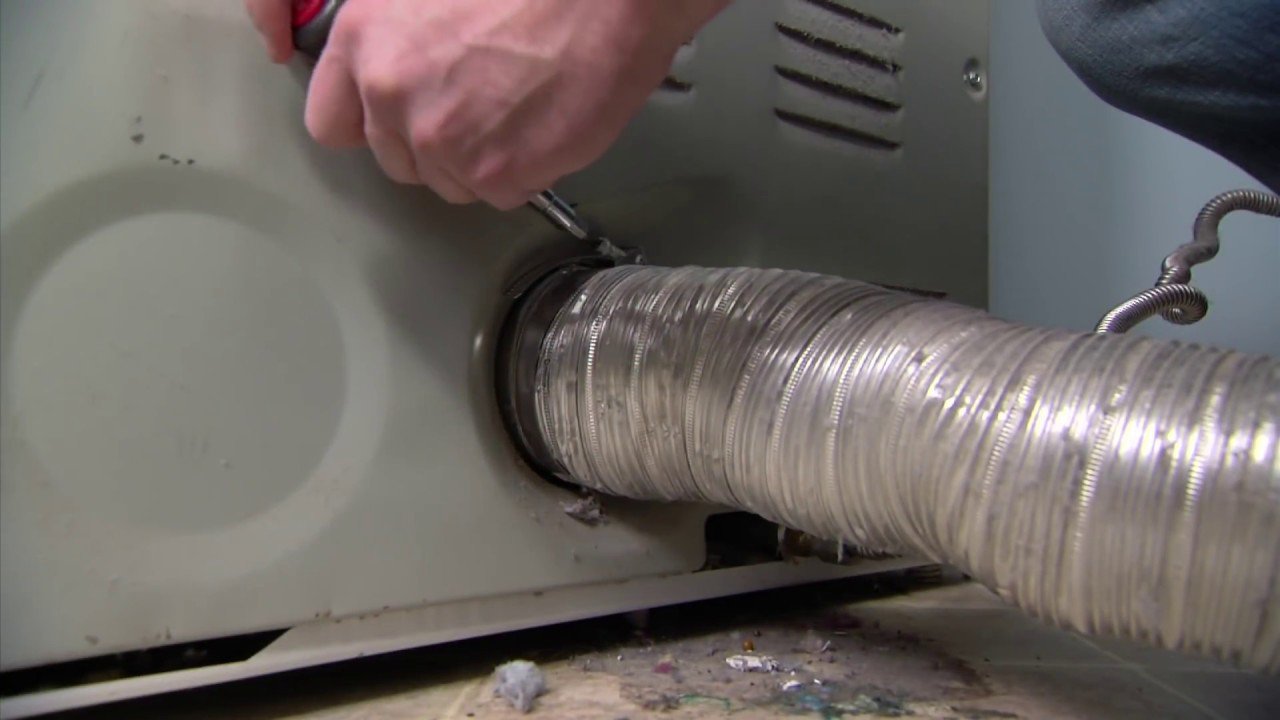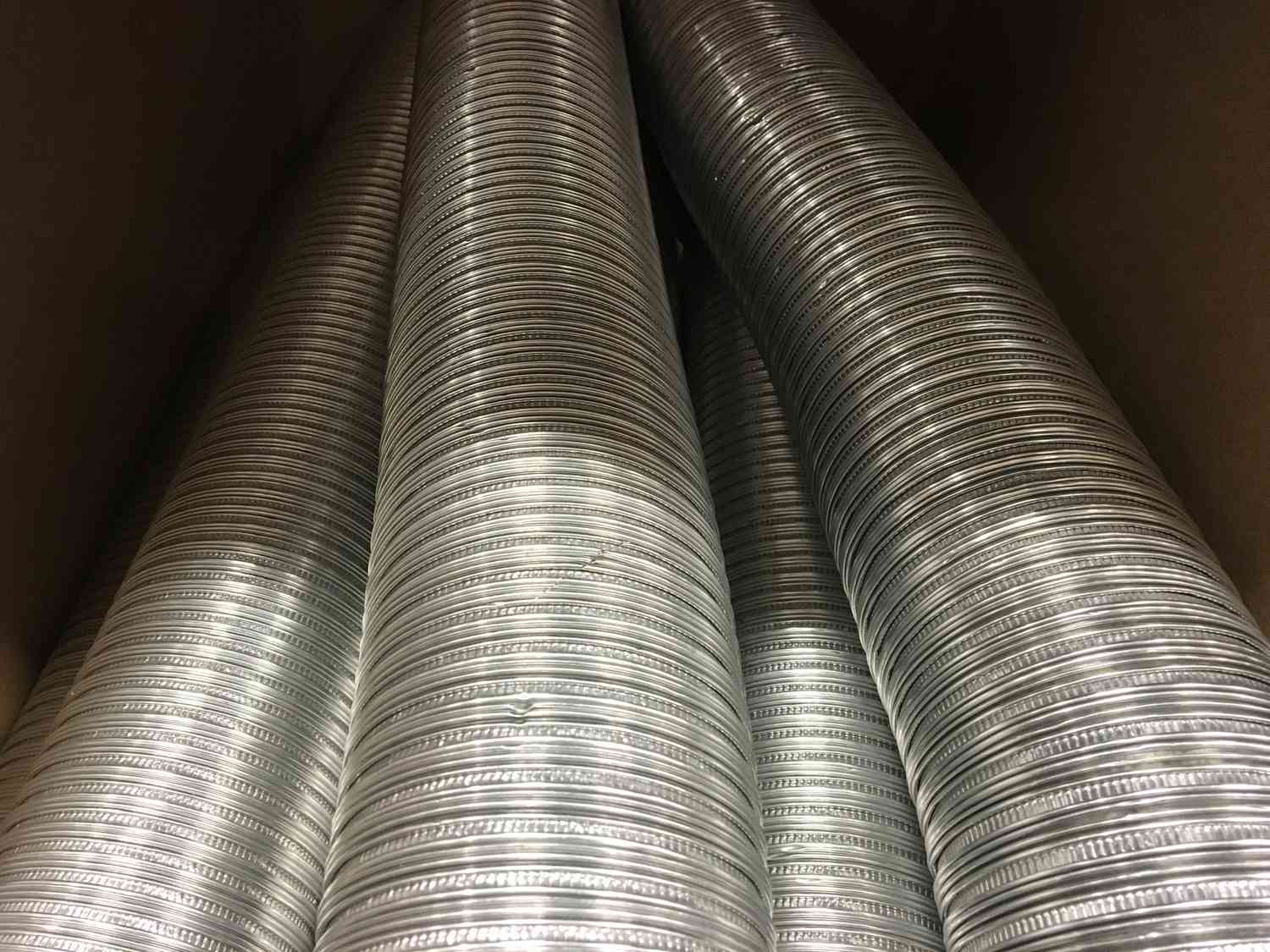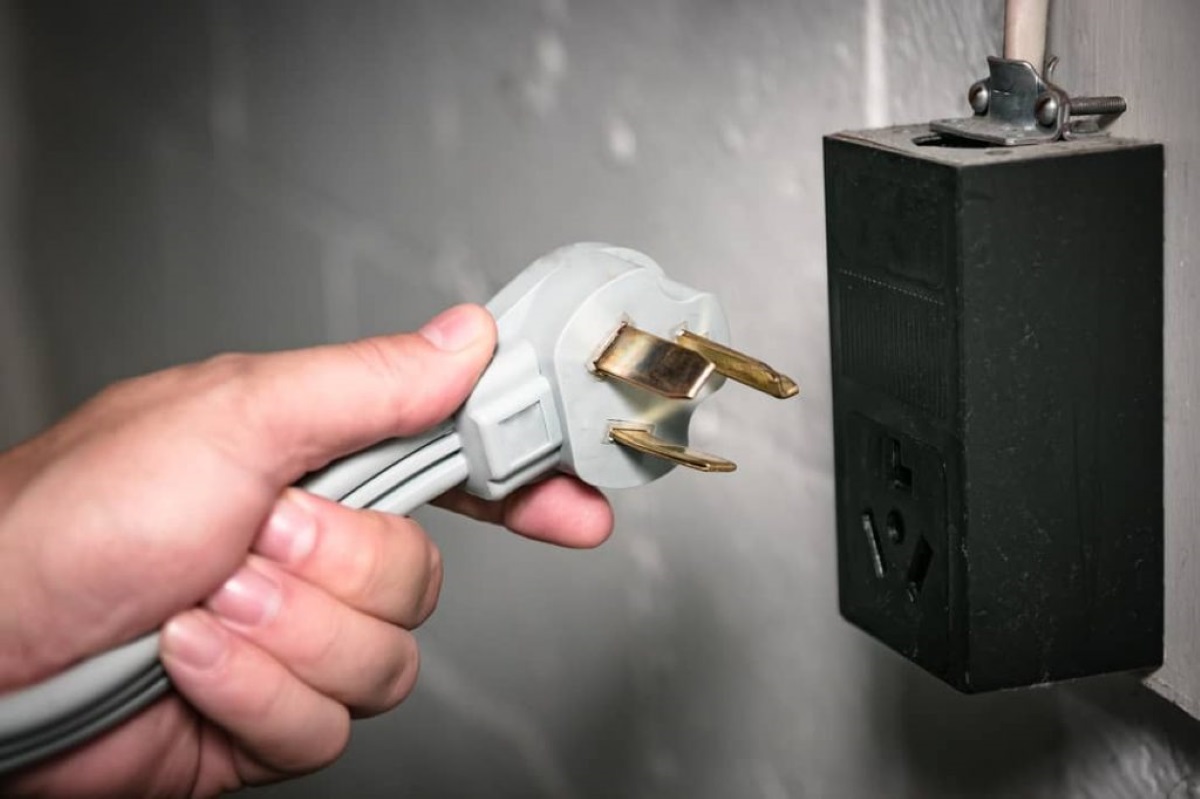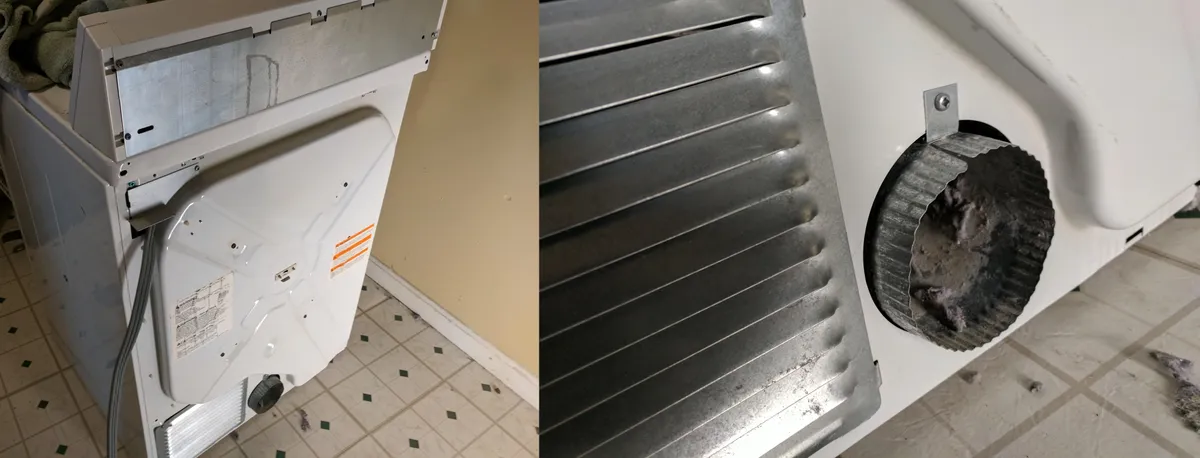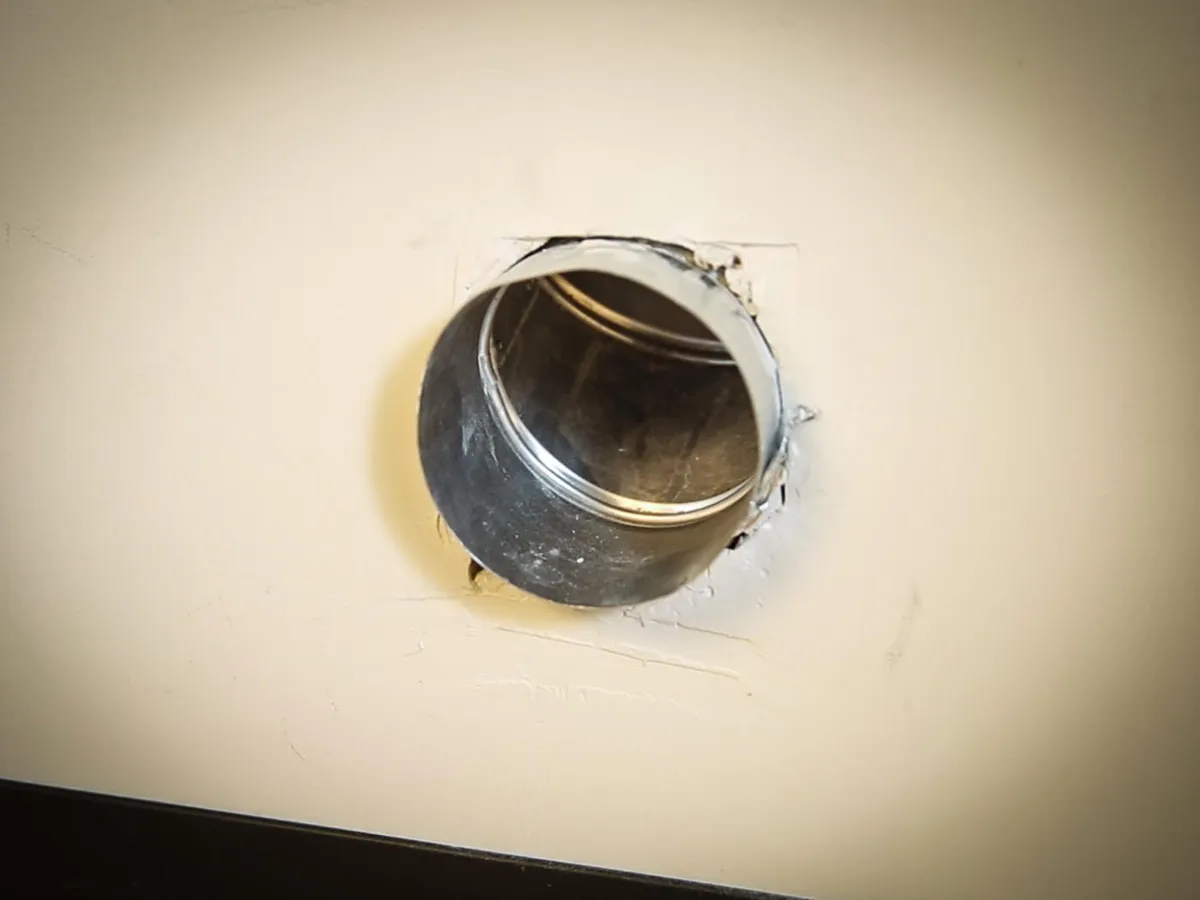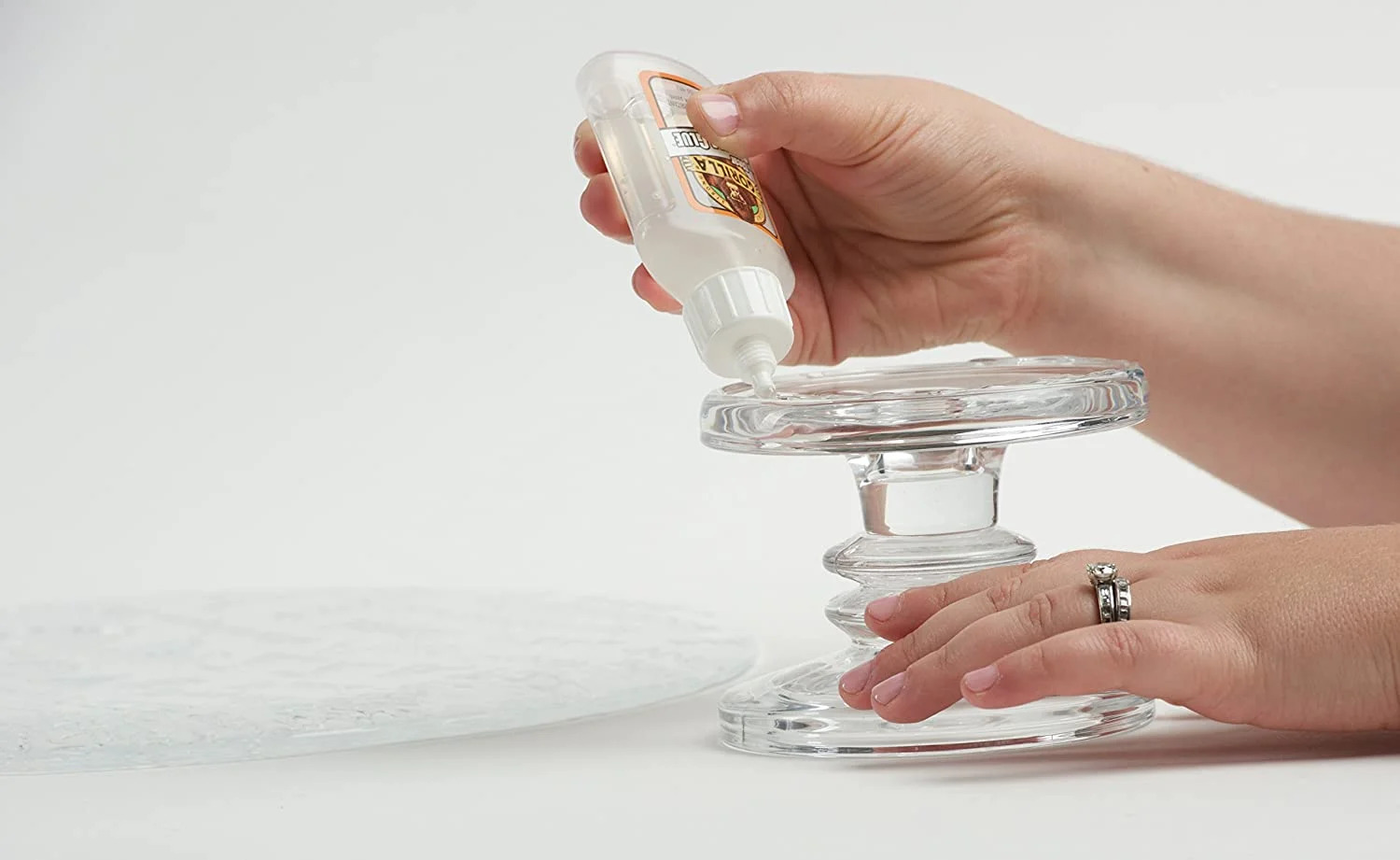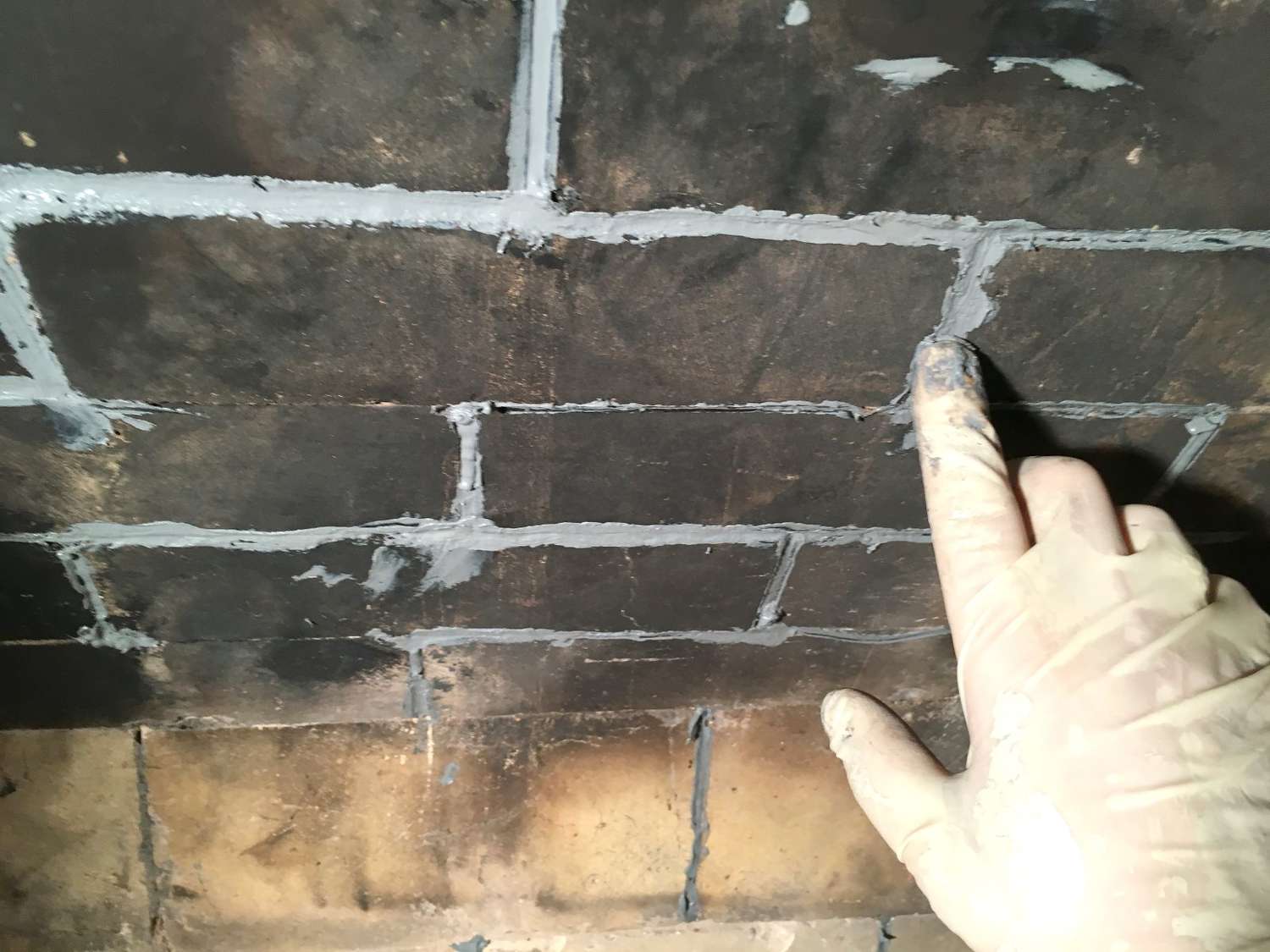Home>Home Maintenance>What Kind Of Tape To Use On A Dryer Vent
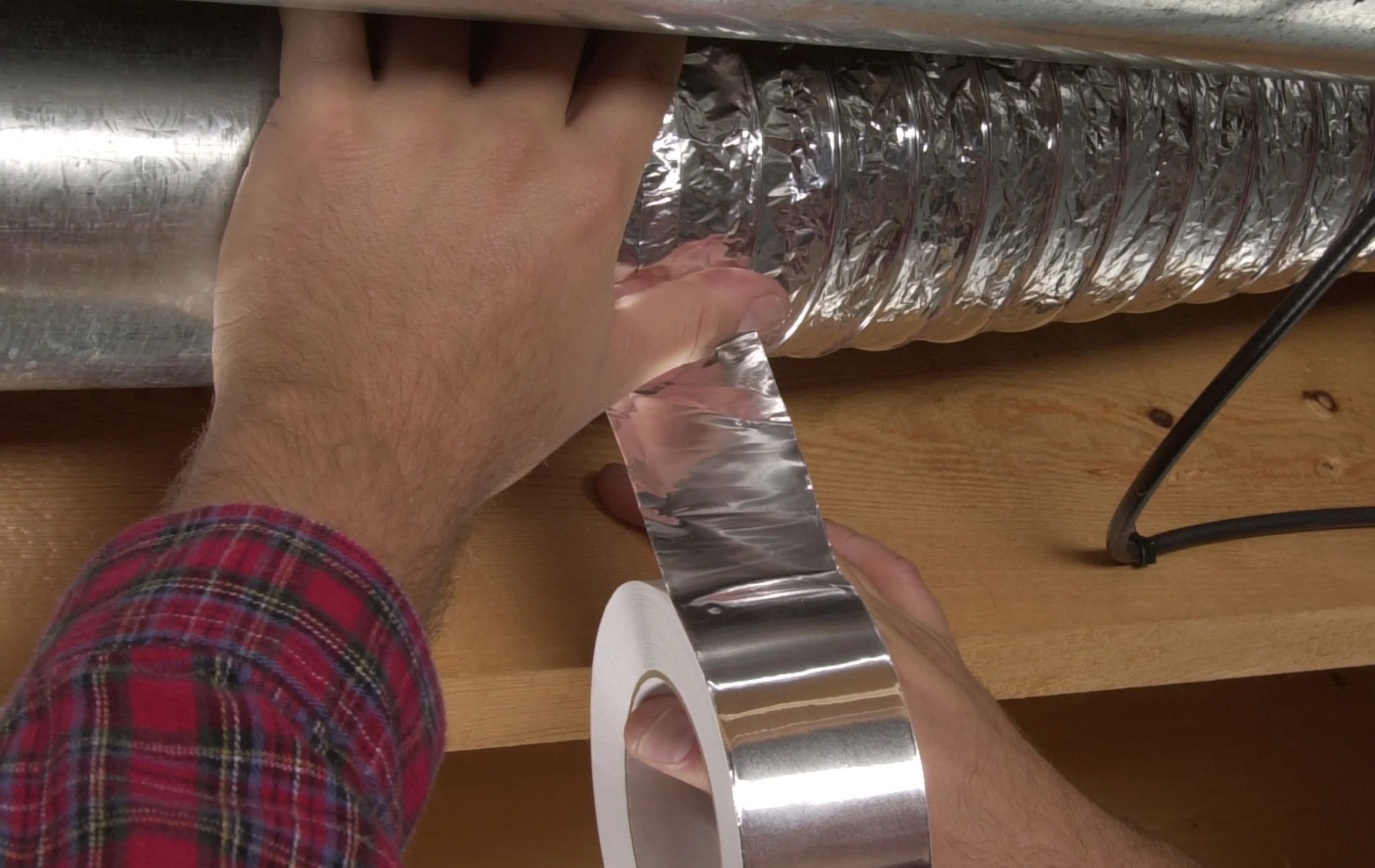

Home Maintenance
What Kind Of Tape To Use On A Dryer Vent
Modified: March 6, 2024
Discover the best tape to use on a dryer vent for optimal home maintenance. Find out which type of tape is recommended for properly sealing your dryer vent and preventing leaks.
(Many of the links in this article redirect to a specific reviewed product. Your purchase of these products through affiliate links helps to generate commission for Storables.com, at no extra cost. Learn more)
Introduction
Maintaining proper ventilation in your home is crucial for various reasons, and when it comes to your dryer, it’s no exception. A vital component of your dryer system is the vent, which allows hot air and moisture to escape from your laundry area. However, to ensure the efficient and safe operation of your dryer, it is important to seal the dryer vent properly using the appropriate tape.
Choosing the right tape for your dryer vent is essential to prevent air leaks, reduce energy waste, and minimize the risk of fire hazards. The tape you select should have specific characteristics that can withstand the high temperatures and constant airflow that dryer vents generate.
In this article, we will guide you in selecting the right tape for your dryer vent. We will discuss the various types of tape available in the market, their compatibility with dryer vents, and the key factors to consider when choosing tape for this purpose. Additionally, we will provide some tips on properly sealing your dryer vent using the selected tape.
By the end of this article, you will have a clear understanding of what kind of tape to use on your dryer vent, ensuring optimal performance and safety in your laundry area. Let’s dive in!
Key Takeaways:
- Choose the right tape for your dryer vent to prevent air leaks, reduce energy waste, and minimize fire hazards. Look for durable, heat-resistant tape that adheres well to ensure a secure and long-lasting seal.
- Properly sealing your dryer vent with the appropriate tape ensures efficient drying, reduces energy consumption, and maintains a safe environment. Follow manufacturer guidelines and inspect the seal regularly for optimal performance.
Read more: What Kind Of Tape Is Used For Alarm Systems
Importance of Choosing the Right Tape for Dryer Vents
When it comes to the proper functioning of your dryer system, choosing the right tape for your dryer vent is of utmost importance. Here’s why:
1. Preventing Air Leaks: An improperly sealed dryer vent can lead to air leaks, which can result in reduced drying efficiency and increased energy consumption. When warm air from the dryer escapes through gaps in the vent, the dryer has to work harder to maintain the desired temperature, wasting energy. By using the right tape, you can ensure a tight seal, preventing any air leaks and optimizing the performance of your dryer.
2. Minimizing Moisture Buildup: Dryers produce hot, moist air while drying your clothes. If the vent is not properly sealed, this moisture can accumulate in your laundry area, leading to mold, mildew, and even structural damage. The right tape will create a secure barrier, preventing the escape of moisture and keeping your laundry area dry and safe.
3. Reducing Fire Hazards: Lint buildup is a common problem in dryer vents. If the vent is not adequately sealed, lint can accumulate in the gaps, creating a fire hazard. The right tape will ensure a tight seal, preventing lint from escaping and reducing the risk of a dryer vent fire.
4. Ensuring Proper Airflow: A well-sealed dryer vent allows for proper airflow, ensuring efficient drying of your clothes. When the vent is sealed improperly, it can restrict the airflow, leading to longer drying times and potential damage to the dryer’s heating elements. The right tape will facilitate unrestricted airflow, maximizing the drying performance of your dryer.
5. Complying with Safety Standards: When it comes to home maintenance, it is crucial to comply with safety standards and building codes. Using the right tape that is approved for dryer vents ensures that you are meeting the necessary requirements. This not only keeps your home safe but also provides peace of mind knowing that you are adhering to regulations.
Choosing the right tape for your dryer vent is essential to maintain the efficiency, safety, and longevity of your dryer system. In the following sections, we will discuss the different types of tape that are compatible with dryer vents, allowing you to make an informed decision for your home.
Factors to Consider When Selecting Tape for Dryer Vents
Selecting the right tape for your dryer vent involves considering several important factors. Here are the key factors to keep in mind when choosing tape for your dryer vents:
1. Durability and Strength: Since dryer vents are exposed to high temperatures and constant airflow, the tape used to seal them must be durable and able to withstand these conditions. Look for tapes that are specifically designed for high-temperature applications and have a strong adhesive. This will ensure that the tape remains securely in place, even under the extreme conditions of a dryer vent.
2. Heat and Temperature Resistance: Dryers generate a significant amount of heat, so it is crucial to select a tape that can withstand high temperatures. Look for tapes that are rated for high heat resistance, typically in the range of 200°F (93°C) or higher. This will prevent the tape from melting or losing its adhesive properties over time.
3. Adhesive Properties: The tape used for dryer vents should have a strong adhesive that creates a secure bond with the vent material. It should be able to adhere well to both metal and flexible ductwork. Consider tapes with aggressive adhesive properties to ensure a long-lasting seal.
4. Complying with Building and Fire Codes: When selecting tape for dryer vents, it is essential to check if there are any specific building or fire codes in your area that dictate the type of tape that should be used. Some regions may have regulations requiring specific tape materials or fire-rated tapes to be used for dryer vent installations. Ensure that the tape you choose meets these requirements to remain compliant with local codes.
5. Ease of Application: Consider the ease of application when selecting tape for your dryer vents. Look for tapes that are easy to handle and apply, allowing for a hassle-free installation process. Some tapes may offer features like tear-resistant backing or dispensers that make the application process smoother and more convenient.
By considering these factors, you can make a well-informed decision when selecting tape for your dryer vents. In the following sections, we will discuss the different types of tape that are commonly used for dryer vents, along with their specific benefits and applications.
Types of Tape Compatible with Dryer Vents
When it comes to selecting tape for your dryer vents, there are several types of tape that are commonly used and compatible with these applications. Each type has its own set of benefits and specific applications. Here are the most commonly used types of tape for dryer vents:
1. Foil Tape: Foil tape is a popular choice for sealing dryer vents due to its excellent heat resistance and durability. It is typically made of aluminum foil with a strong adhesive backing. Foil tape is designed to withstand high temperatures and offer a long-lasting, airtight seal. It adheres well to both metal and flexible ductwork, making it a versatile option for dryer vents.
2. Aluminum Tape: Similar to foil tape, aluminum tape is a reliable option for sealing dryer vents. It is made of a thin aluminum material with a strong adhesive. Aluminum tape provides excellent heat resistance and adhesion, ensuring a secure seal. It is also resistant to moisture and can withstand various weather conditions.
3. HVAC Tape: HVAC (Heating, Ventilation, and Air Conditioning) tape is designed for use in HVAC applications, including dryer vent sealing. It is a versatile tape that offers excellent durability, heat resistance, and adhesion properties. HVAC tape typically has a reinforced backing and is made of a strong, moisture-resistant material. It is suitable for use with both metal and flexible dryer vents.
4. Duct Tape: While duct tape is a commonly used adhesive tape, it is not recommended for sealing dryer vents. Traditional duct tape may not withstand the high temperatures generated by dryers and can deteriorate over time. It is best to avoid using duct tape for dryer vents and opt for specific tapes that are designed for this purpose.
5. High-Temperature Tape: For extreme heat situations, such as commercial dryers or specific dryer vents that reach exceptionally high temperatures, high-temperature tape is recommended. This type of tape is specifically designed to withstand extremely high temperatures, often exceeding 500°F (260°C). It is composed of specialized materials, such as silicone or ceramic, to ensure reliable and long-lasting performance in high-heat environments.
When selecting tape for your dryer vents, consider the specific requirements of your dryer system and choose a tape that is compatible with the heat levels generated by your dryer. Additionally, ensure that the tape is suitable for the type of vent material you have, whether it is metal or flexible ductwork.
In the next section, we will discuss key considerations to keep in mind when selecting tape for your dryer vents, to help you make an informed decision.
Foil Tape
Foil tape is a versatile and commonly used option for sealing dryer vents. It is particularly well-suited for this application due to its excellent heat resistance, durability, and adhesion properties.
Characterized by its aluminum foil construction, foil tape is designed to withstand high temperatures and provide a long-lasting, airtight seal on dryer vents. It is compatible with both metal and flexible ductwork, offering flexibility in installation.
Foil tape is preferred for dryer vents because it effectively prevents air leaks and minimizes heat loss. By creating a secure seal, foil tape helps maintain the efficiency and performance of your dryer, reducing energy waste and saving you money on utility bills.
One of the key advantages of foil tape is its strong adhesive backing. This adhesive ensures that the tape remains securely in place, even in the high-temperature environment of a dryer vent. It adheres well to various surfaces, ensuring a tight and reliable seal.
Additionally, foil tape is resistant to moisture, which is crucial for preventing the accumulation of mold or mildew in your laundry area. It acts as a barrier, preventing moisture from escaping the vent and causing potential damage to your home’s structure.
When using foil tape for sealing dryer vents, it is important to handle it properly to ensure a successful application. Make sure the surface is clean and dry before applying the tape. Press firmly on the tape to ensure proper adhesion, and smooth out any wrinkles or air bubbles for a secure seal.
Overall, foil tape is a popular choice for sealing dryer vents due to its durability, heat resistance, and reliability. It provides a long-lasting solution to prevent air leaks, moisture buildup, and potential fire hazards. Consider using foil tape for your dryer vent sealing needs to ensure optimal performance and efficiency.
Read also: 10 Incredible Dryer Vent Tape For 2024
Aluminum Tape
Aluminum tape is another excellent option for sealing dryer vents, offering similar benefits to foil tape. It is made from thin aluminum material with a strong adhesive backing, providing a reliable and durable seal.
One of the primary advantages of aluminum tape is its exceptional heat resistance. It can withstand high temperatures generated by dryers without compromising its adhesive properties or structural integrity. This heat resistance ensures a long-lasting and secure seal on your dryer vent.
Aluminum tape is also known for its moisture resistance. This makes it an ideal choice for dryer vents, as it prevents the escape of moisture and minimizes the risk of mold or mildew growth in your laundry area. The tape acts as a protective barrier, keeping your home safe and dry.
Similar to foil tape, aluminum tape offers strong adhesion to various materials, including metal and flexible ductwork. It forms a tight bond, ensuring that the tape remains securely in place even in challenging conditions. The strong adhesive backing on aluminum tape guarantees a reliable seal that lasts over time.
When using aluminum tape for sealing dryer vents, it is essential to apply it to clean and dry surfaces. Ensure that the vent is free from dust, debris, and any other contaminants that may hinder the adhesion process. Firmly press down on the tape to ensure it sticks securely and smoothly to the vent.
Aluminum tape is a versatile option that is compatible with a wide range of dryer vent materials. It is an effective solution for preventing air leaks, reducing energy waste, and maintaining the efficiency of your dryer system.
It is important to note that while aluminum tape offers many benefits, it is crucial to choose a product specifically designed for dryer vent applications. Ensure that the tape is rated for high temperatures and suitable for use in dryer vent installations to ensure optimal performance and safety.
Consider using aluminum tape for your dryer vent sealing needs to enjoy the benefits of its heat resistance, moisture resistance, and strong adhesive properties. With aluminum tape, you can have peace of mind knowing that your dryer vent is securely sealed, promoting efficient and safe operation of your dryer system.
HVAC Tape
HVAC tape is a versatile and reliable option for sealing dryer vents. Designed for use in Heating, Ventilation, and Air Conditioning systems, HVAC tape offers several benefits that make it compatible with dryer vent applications.
HVAC tape is known for its durability and high-quality construction. It typically features a reinforced backing, which provides added strength and resistance to tearing. This makes HVAC tape resilient against the constant airflow and pressure that dryer vents experience.
One of the key advantages of HVAC tape is its excellent heat resistance. It can withstand the high temperatures generated by dryers without losing its adhesive properties or degrading over time. This heat resistance ensures that the tape remains securely in place, maintaining an airtight seal on the dryer vent.
In addition to its heat resistance, HVAC tape offers strong adhesion to various surfaces, including metal and flexible ductwork. This ensures a reliable and secure seal, minimizing the risk of air leaks and maximizing the efficiency of your dryer system.
Another important feature of HVAC tape is its moisture resistance. Moisture can be a significant issue in dryer vents, leading to mold growth and potential damage. HVAC tape acts as a barrier, preventing moisture from escaping the vent and causing such problems in your laundry area.
When using HVAC tape for sealing dryer vents, ensure that the surface is clean and dry before applying the tape. Press firmly on the tape to ensure proper adhesion, and smooth out any wrinkles or air bubbles for an effective and long-lasting seal.
It is important to note that not all HVAC tapes are suitable for dryer vent applications. Look for tapes specifically labeled for use in dryer vents to ensure they meet the necessary heat resistance and safety requirements.
HVAC tape is a reliable and popular choice for sealing dryer vents due to its durability, heat resistance, and moisture resistance. Consider using HVAC tape to achieve an airtight seal on your dryer vent, promoting optimal performance and preventing air leaks and moisture buildup in your laundry area.
Duct Tape
While duct tape is a commonly used adhesive tape in various applications, it is not recommended for sealing dryer vents. Although duct tape offers strong adhesion and versatility, it is not designed to withstand the high temperatures and constant airflow of a dryer vent.
Duct tape is made with a fabric or plastic backing, which may not provide adequate heat resistance for dryer vents. The adhesive on duct tape can degrade and lose its effectiveness when exposed to the high temperatures generated by the dryer, potentially leading to a weak seal and air leaks.
Furthermore, duct tape may not have sufficient moisture resistance, which is essential for preventing mold or mildew growth in the vent. Moisture can escape through gaps in the tape, leading to potential damage and health hazards in your laundry area.
Instead of using duct tape, it is best to choose tapes specifically designed for dryer vent applications. Foil tape, aluminum tape, and HVAC tape are more suitable options, as they are specially made to withstand high temperatures, provide excellent adhesion, and offer moisture resistance.
When it comes to sealing dryer vents, it is crucial to prioritize safety and durability. Using tape that is specifically designed for this purpose ensures proper sealing and reduces the risk of air leaks, energy waste, and potential fire hazards.
Remember, duct tape may be handy for temporary fixes or non-heat-related tasks around the house, but when it comes to sealing dryer vents, it is best to choose tapes that are specifically engineered for this particular application.
By opting for the correct tape for your dryer vents, you can have confidence in the durability, heat resistance, and moisture resistance of the seal, ensuring optimal performance and safety of your dryer system.
Use aluminum foil tape or metal tape to seal and secure the joints of a dryer vent. These tapes are heat resistant and durable, making them ideal for this purpose. Avoid using duct tape, as it can dry out and lose its adhesive properties over time.
High-Temperature Tape
For dryer vents that require even greater heat resistance, such as commercial dryers or specific dryer vent systems that reach exceptionally high temperatures, high-temperature tape is the ideal choice. This type of tape is specifically designed to withstand extremely high temperatures, often exceeding 500°F (260°C).
High-temperature tape is typically made from specialized materials like silicone or ceramic, which have excellent heat resistance properties. These materials ensure that the tape remains structurally stable and the adhesive remains effective even in extreme heat conditions.
One of the key advantages of high-temperature tape is its ability to provide a reliable and long-lasting seal in high-heat environments. It can withstand the intense heat generated by dryers without melting, deforming or losing its adhesive properties.
Furthermore, high-temperature tape offers excellent adhesion to various surfaces, including metal and flexible ductwork. It forms a tight bond, ensuring a secure seal that prevents air leaks and maintains the efficiency of your dryer system.
The moisture resistance of high-temperature tape is also noteworthy. It acts as a barrier, preventing the escape of moisture from the dryer vent and minimizing the risk of mold or mildew growth in your home.
When using high-temperature tape, it is important to ensure that the surface is clean and dry before applying the tape. Press firmly on the tape to ensure proper adhesion, and smooth out any wrinkles or air bubbles for a secure and reliable seal.
High-temperature tape is specifically designed for extreme heat applications, making it a reliable choice for dryer vents that operate at exceptionally high temperatures. By using high-temperature tape, you can have confidence that your dryer vent is securely sealed, promoting efficient and safe operation of your dryer system.
It is important to note that high-temperature tape may not be necessary for standard residential dryer vents, as they typically do not reach the extreme temperatures that commercial dryers or specialized systems might experience. However, if you have a specific requirement for high-heat resistance, using high-temperature tape can provide added peace of mind.
Read more: What Is A Dryer Vent
Key Considerations for Tape Selection
When selecting tape for sealing dryer vents, it is important to consider several key factors. These considerations ensure that the tape you choose is compatible with the high temperatures and constant airflow generated by your dryer vent, while also meeting safety standards and providing a reliable seal. Here are the key considerations for tape selection:
1. Durability and Strength: Since dryer vents are exposed to high temperatures and constant airflow, choose a tape that is durable and offers sufficient strength to withstand these conditions. Look for tapes with reinforced backings and excellent tear resistance to ensure long-lasting performance.
2. Heat and Temperature Resistance: Consider the heat resistance of the tape. It should be able to withstand the high temperatures generated by your dryer vent without melting, degrading, or losing its adhesive properties. Look for tapes that are specifically designed for high-temperature applications.
3. Adhesive Properties: The tape should have a strong adhesive that creates a secure bond with the vent material. Ensure that the adhesive remains effective even under the extreme temperatures of a dryer vent. Aggressive adhesive properties will help ensure that the tape remains securely in place.
4. Complying with Building and Fire Codes: Check for any specific building or fire codes in your area that dictate the type of tape that should be used for dryer vent installations. Some regions may have regulations requiring specific tape materials or fire-rated tapes to be used. Make sure that the tape you choose meets these requirements.
5. Ease of Application: Consider the ease of application when selecting tape for your dryer vent. Look for tapes that are easy to handle and apply, allowing for a hassle-free installation process. Features such as tear-resistant backing or dispensers can make the application process smoother and more convenient.
By considering these key factors, you can choose the right tape for sealing your dryer vent. Prioritize durability, heat resistance, adhesive properties, compliance with codes, and ease of application. With the right tape in place, you can ensure a secure and efficient seal that keeps your dryer vent functioning optimally while reducing the risk of air leaks, energy wastage, and potential fire hazards.
Durability and Strength
When selecting tape for sealing dryer vents, durability and strength are crucial considerations. The tape must be able to withstand the high temperatures and constant airflow that dryer vents generate while providing a reliable and long-lasting seal. Here’s why durability and strength are important:
Avoiding Tape Failure: Dryer vents can reach high temperatures, sometimes exceeding 150°F (65°C). It is essential to choose a tape that can withstand these extreme heat conditions without melting, degrading, or losing its adhesive properties. A tape with low durability may fail, resulting in air leaks, reduced efficiency, and potential safety hazards.
Minimizing Air Leaks: A weak or insufficiently durable tape can lead to air leaks in the dryer vent. Air leaks not only reduce the efficiency of the dryer but also waste energy. The dryer will need to work harder to maintain the desired temperature, resulting in longer drying times and higher energy consumption. By selecting a durable tape, you can ensure a tight seal that prevents air leaks and optimizes the performance of your dryer.
Longevity: A strong and durable tape will have a longer lifespan, reducing the need for frequent replacements. Choosing a tape with good tear resistance and overall strength will ensure that it remains securely in place over time, maintaining an effective seal on the dryer vent. This saves you time, effort, and money in the long run.
Resistance to Environmental Factors: Dryer vents are subjected to various environmental factors such as humidity, moisture, dust, and temperature fluctuations. A tape with good durability and strength will be more resistant to these factors and provide a reliable seal. It will withstand exposure to moisture, preventing the growth of mold or mildew, and ensure that the vent remains properly sealed.
When considering the durability and strength of a tape, look for options with reinforced backings, tear resistance, and excellent adhesion properties. These features indicate that the tape is designed to withstand the demanding conditions of a dryer vent. Additionally, it is important to read product specifications and guidelines from manufacturers to ensure you choose a tape suitable for high-temperature applications and capable of providing the necessary durability and strength.
By selecting a tape that is both durable and strong, you can have confidence in the longevity, integrity, and performance of the seal on your dryer vent. This will not only optimize the efficiency of your dryer but also minimize the risk of air leaks, energy waste, and potential safety issues in your home.
Heat and Temperature Resistance
When it comes to selecting tape for sealing dryer vents, heat and temperature resistance are crucial considerations. Dryers generate high temperatures, and the tape used to seal the vent must be able to withstand these extreme heat conditions. Here’s why heat and temperature resistance are important:
Preventing Tape Melting or Degradation: Dryer vents can reach temperatures ranging from 120°F (49°C) to over 150°F (65°C). Using a tape that is not specifically designed for high-temperature applications can result in tape melting, degrading, or losing its adhesive properties. It can compromise the seal and potentially lead to air leaks, reduced efficiency, and safety hazards.
Protecting Against Fire Hazards: A tape that is not heat resistant poses a significant fire hazard. Dryer vents carry high heat and can accumulate lint over time. If the tape used to seal the vent melts or fails due to heat exposure, it can lead to the ignition of the accumulated lint, resulting in a dangerous dryer vent fire. Choosing a tape with excellent heat resistance helps prevent this risk.
Ensuring Long-Term Performance: Heat-resistant tape ensures the longevity and effectiveness of the seal on the dryer vent. It will maintain its structural integrity and adhesive properties even under prolonged exposure to high temperatures. This prolongs the life of the tape and reduces the need for frequent replacements, saving you time and money in maintenance.
Adapting to Temperature Fluctuations: Dryer vents may experience temperature fluctuations during operation. The tape used should be able to withstand these changes without losing its effectiveness. Heat-resistant tape remains stable and secure, providing a reliable seal even when subjected to varying temperatures.
When choosing tape for dryer vents, look for options specifically labeled as heat-resistant or designed for high-temperature applications. These tapes are typically made with materials that can withstand the extreme heat produced by dryers, such as aluminum, foil, or specialized heat-resistant coatings.
It is crucial to read the manufacturer’s specifications and guidelines when selecting a heat-resistant tape. Ensure that the tape is rated for temperatures above and beyond what your dryer vent typically reaches. Additionally, consider the specific requirements of your dryer system and choose a tape that meets those needs in terms of heat resistance.
By choosing a tape with excellent heat and temperature resistance, you can have confidence that the seal on your dryer vent remains intact, preventing air leaks, reducing fire hazards, and ensuring the safe and efficient operation of your dryer.
Adhesive Properties
When selecting tape for sealing dryer vents, considering the adhesive properties is essential. The adhesive on the tape is what creates a strong and reliable bond between the tape and the surface of the vent. Here’s why adhesive properties are important:
Secure Bonding: The primary purpose of the tape is to create a tight seal on the dryer vent. A tape with strong adhesive properties ensures that it adheres firmly to the surface, preventing air leaks and maintaining the efficiency of the dryer system. It is crucial to choose a tape with a strong adhesive that forms a lasting bond.
Compatibility with Different Materials: Dryer vents may be made of various materials, including metal and flexible ductwork. The tape used should have excellent adhesion on different surfaces without peeling or losing its grip over time. It should be compatible with various vent materials to ensure a reliable and durable seal.
Resistance to Environmental Factors: The adhesive properties of the tape should be resilient to environmental factors such as heat, moisture, and dust. It should maintain its effectiveness even when exposed to these conditions to ensure a long-lasting seal. A tape with strong adhesive properties will remain securely in place, even in challenging environments.
Easy Application and Repositioning: The tape should also be easy to apply, allowing for hassle-free installation. Look for tapes that offer straightforward application processes, such as peel-and-stick designs. Additionally, if needed, consider tapes that allow for repositioning during installation, ensuring a precise and accurate seal without compromising the adhesive properties.
When choosing tape for dryer vents, consider options with adhesive designed specifically for this purpose. Look for tapes specifically labeled for dryer vent applications, as they will have superior adhesion suitable for the demands of sealing a dryer vent. Consider tapes with a strong adhesive that is capable of withstanding the high temperatures and airflow of the dryer system.
It is essential to follow the manufacturer’s instructions on how to best apply the tape to the dryer vent. Ensure that the surface is clean and dry before applying the tape, as this will allow for optimal adhesion. Applying firm pressure and smoothing out any wrinkles or air bubbles will help create a secure bond between the tape and the vent surface.
By selecting a tape with excellent adhesive properties, you can have confidence in the reliability and durability of the seal on your dryer vent. This will minimize air leaks, save energy, and ensure the efficient operation of your dryer system.
Read more: How To Use An Indoor Dryer Vent
Complying with Building and Fire Codes
When selecting tape for sealing dryer vents, it is crucial to consider building and fire codes specific to your region. These codes dictate the type of tape that should be used for dryer vent installations to ensure safety and compliance. Here’s why complying with building and fire codes is important:
Promoting Safety: Building and fire codes are designed to ensure the safety of residents and properties. By using the correct tape for sealing dryer vents, you can help minimize the risk of fire hazards or other safety issues associated with improper venting. Adhering to codes helps ensure a safe and secure dryer vent system.
Preventing Non-Compliance Issues: Non-compliance with building and fire codes can result in legal and financial consequences. When it comes to home maintenance, it is essential to comply with these codes to avoid penalties and potential complications when selling or renting your property. Using the right tape for dryer vents demonstrates your commitment to following regulations and maintaining a safe living environment.
Guidelines for Best Practices: Building and fire codes provide guidelines for best practices in dryer vent installations. These codes often specify the appropriate tape materials or fire-rated tapes that should be used. By adhering to these guidelines, you can ensure that your dryer vent system is properly sealed, efficient, and meets the necessary safety requirements.
To comply with building and fire codes, it is important to research and familiarize yourself with the specific requirements in your region. These codes may vary, so follow the guidelines provided by local authorities, building departments, or fire departments. They will specify whether specific tape materials or fire-rated tapes are required for your dryer vent installation.
When selecting tape, look for products that are explicitly labeled as compliant with the relevant building and fire codes. These tapes are designed to meet the necessary safety standards. Ensure that the tape you choose has the appropriate certifications or ratings, demonstrating that it is suitable for dryer vent applications and meets code requirements.
By selecting the right tape and complying with building and fire codes, you can have confidence that your dryer vent system meets safety standards and regulations. This not only promotes a safe environment but also provides peace of mind knowing that your dryer is operating efficiently and with minimal risk.
Proper Techniques for Taping Dryer Vents
Properly taping dryer vents plays a crucial role in ensuring an effective seal and optimizing the performance of your dryer system. Below are some essential techniques to follow when taping dryer vents:
1. Prepare the Surface: Before applying tape, it is important to ensure that the surface of the dryer vent is clean and free from dust, debris, and any other contaminants. Use a damp cloth or brush to remove any dirt or residue, and let the surface dry completely.
2. Select the Right Tape: Choose the tape that best suits your dryer vent requirements, considering factors such as heat resistance, adhesive properties, and compatibility with the vent material. Foil tape, aluminum tape, and HVAC tape are commonly recommended options for sealing dryer vents.
3. Cut the Tape in Appropriate Lengths: Cut the tape into suitable lengths that will cover the desired portions of the dryer vent. It is generally recommended to cut the tape slightly longer than necessary to ensure complete coverage.
4. Start at the Seam: Begin taping at the seam or joint of the dryer vent. This is where the two sections of the vent connect. Place one end of the tape securely at the seam, ensuring that it overlaps onto both sections of the vent.
5. Apply the Tape in a Spiral Motion: Wrap the tape tightly around the dryer vent in a spiral motion, overlapping each layer slightly. This technique helps create a secure and uniform seal along the entire length of the vent. Ensure that the tape adheres firmly to the surface and forms a tight bond.
6. Press Firmly and Smooth Out Wrinkles: After each spiral wrap, press the tape firmly against the vent surface to ensure proper adhesion. Smooth out any wrinkles or air bubbles as you go to maintain a clean and flat seal.
7. Overlap the Tape Seams: When reaching the end of one piece of tape, overlap the next piece onto the previous one by a few inches. This overlapping technique provides additional strength and helps maintain a continuous seal along the length of the dryer vent.
8. Check for Proper Coverage: After taping the entire length of the dryer vent, visually inspect the seal to ensure that there are no gaps or openings. The tape should cover the entire circumference of the vent and form a complete, airtight seal.
9. Inspect and Test the Seal Regularly: Periodically check the taped dryer vent to ensure that the seal remains intact and secure. Monitor for any signs of damage, wear, or peeling. Additionally, test the seal by running the dryer and feeling for any air leaks around the taped area.
By following these proper techniques, you can achieve a secure and effective seal when taping your dryer vent. Remember to prioritize cleanliness, proper tape selection, and thorough coverage along the length of the vent. By maintaining a well-sealed dryer vent, you can optimize the performance of your dryer, reduce energy waste, and ensure a safe and efficient drying process.
Conclusion
Choosing the right tape for your dryer vents is crucial for maintaining the efficiency, safety, and longevity of your dryer system. By selecting the appropriate tape, you can prevent air leaks, reduce energy waste, minimize moisture buildup, and mitigate the risk of fire hazards. Here are some key points to remember:
Consider the durability and strength of the tape to ensure it can withstand the high temperatures and constant airflow of the dryer vents. Look for tapes with reinforced backings and tear resistance.
Heat and temperature resistance are essential factors to ensure the tape can withstand the extreme temperatures generated by the dryer vent. Choose tapes specifically designed for high-temperature applications.
Pay attention to the adhesive properties of the tape. It should form a strong and secure bond with the dryer vent surface and remain effective under varying environmental conditions.
Compliance with building and fire codes is vital to ensure the tape meets safety requirements and installation guidelines specific to your region.
Proper techniques for taping dryer vents include preparing the surface, selecting the right tape, applying it in a spiral motion, pressing firmly, and ensuring complete coverage along the length of the vent.
Regularly inspect and monitor the seal on your dryer vent to ensure it remains intact and secure. Address any issues promptly by reapplying or replacing the tape as necessary.
By considering these factors and following proper techniques, you can achieve a well-sealed dryer vent that promotes efficient drying, reduces energy consumption, and ensures a safe operating environment. Regular maintenance and monitoring of the taped seal will ensure its effectiveness over time.
Remember, when in doubt, consult with a professional or refer to the manufacturer’s guidelines to ensure you are using the most suitable tape for your specific dryer vent system.
Taking the time to choose the right tape and apply it properly will help you enjoy efficient and safe drying operations. So, seal your dryer vent with confidence and enjoy the benefits of a well-maintained and properly sealed dryer system.
Frequently Asked Questions about What Kind Of Tape To Use On A Dryer Vent
Was this page helpful?
At Storables.com, we guarantee accurate and reliable information. Our content, validated by Expert Board Contributors, is crafted following stringent Editorial Policies. We're committed to providing you with well-researched, expert-backed insights for all your informational needs.
